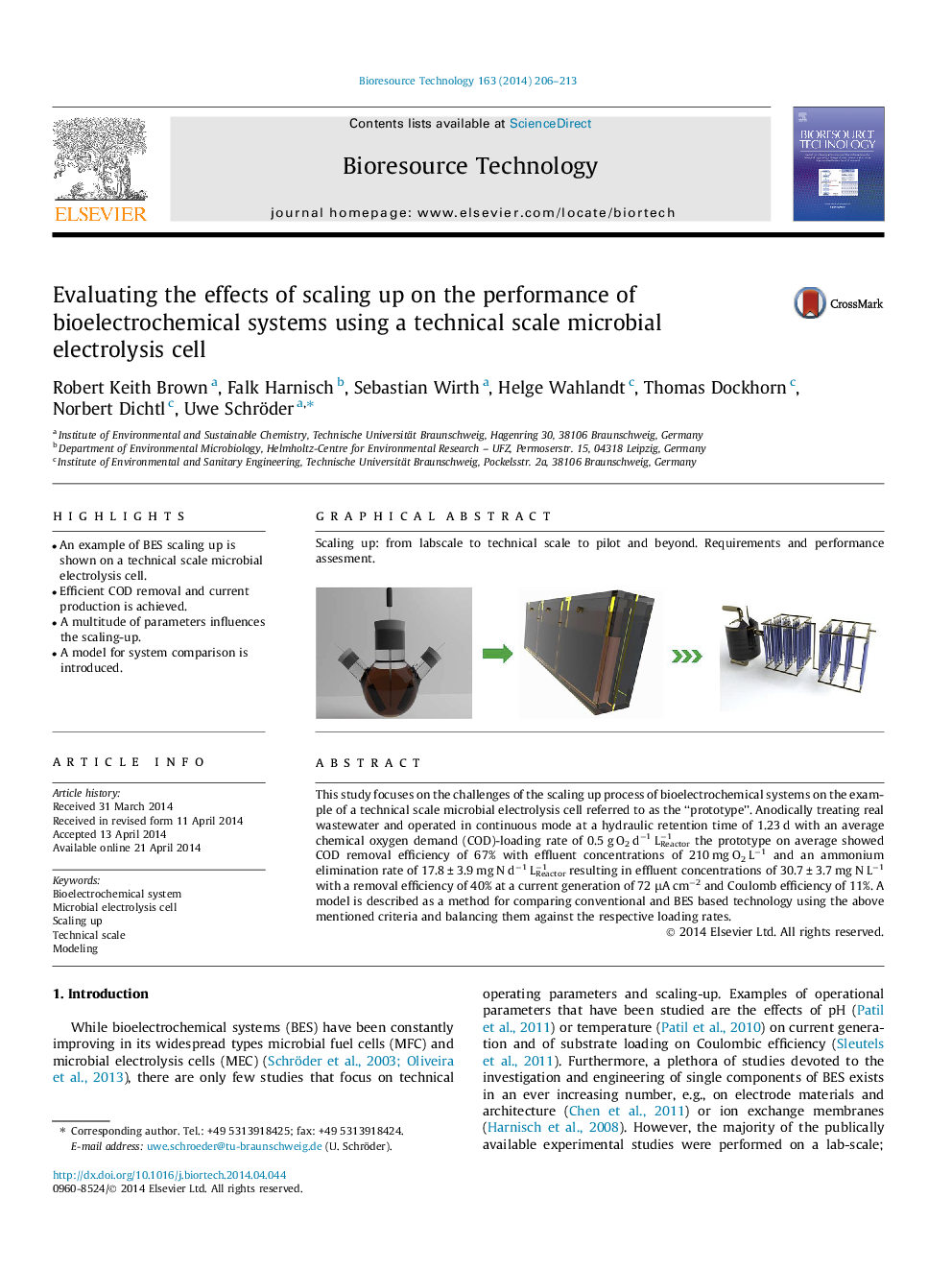| کد مقاله | کد نشریه | سال انتشار | مقاله انگلیسی | نسخه تمام متن |
|---|---|---|---|---|
| 680860 | 1459980 | 2014 | 8 صفحه PDF | دانلود رایگان |
• An example of BES scaling up is shown on a technical scale microbial electrolysis cell.
• Efficient COD removal and current production is achieved.
• A multitude of parameters influences the scaling-up.
• A model for system comparison is introduced.
This study focuses on the challenges of the scaling up process of bioelectrochemical systems on the example of a technical scale microbial electrolysis cell referred to as the “prototype”. Anodically treating real wastewater and operated in continuous mode at a hydraulic retention time of 1.23 d with an average chemical oxygen demand (COD)-loading rate of 0.5 g O2 d−1 LReactor−1 the prototype on average showed COD removal efficiency of 67% with effluent concentrations of 210 mg O2 L−1 and an ammonium elimination rate of 17.8 ± 3.9 mg N d−1 LReactor−1 resulting in effluent concentrations of 30.7 ± 3.7 mg N L−1 with a removal efficiency of 40% at a current generation of 72 μA cm−2 and Coulomb efficiency of 11%. A model is described as a method for comparing conventional and BES based technology using the above mentioned criteria and balancing them against the respective loading rates.
Scaling up: from labscale to technical scale to pilot and beyond. Requirements and performance assesment.Figure optionsDownload as PowerPoint slide
Journal: Bioresource Technology - Volume 163, July 2014, Pages 206–213
